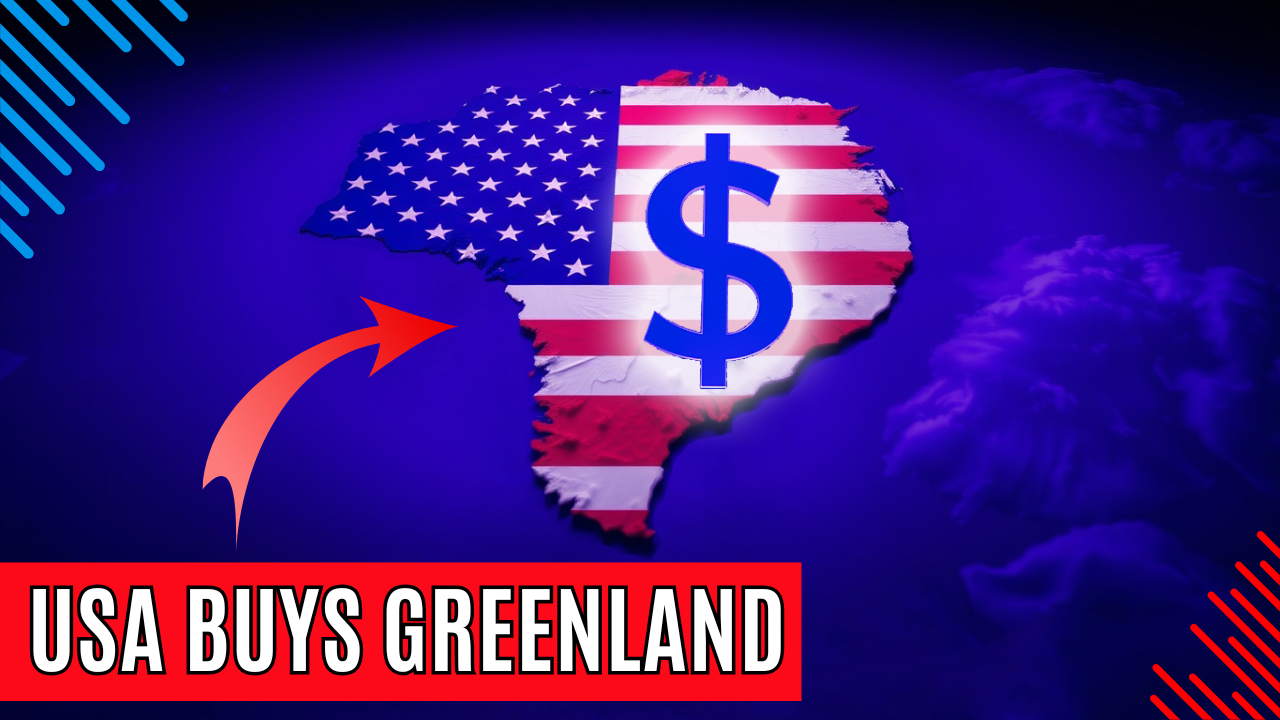USA Buys Greenland: How Would It Change the World?
Imagine a scenario where Greenland, the world’s largest island, becomes part of the United States. How would this reshape the geopolitical landscape? What would it mean for Greenland’s people, the US, and the broader global community? In this blog post, we’ll explore the historical context, cultural considerations, economic and political ramifications, environmental concerns, and public opinion surrounding such a monumental transaction. If you enjoy exploring fascinating alternate history scenarios, don’t forget to like this video and subscribe to our channel for more thought-provoking content! Historical Context The US interest in Greenland is not new. Proposals to acquire Greenland date back to the 19th century, with notable attempts in 1867, 1910, and 1946. Each reflected Greenland’s strategic importance. During the Cold War, the establishment of the Thule Air Base solidified Greenland’s role in American defense strategy. Its Arctic location made it a key point for military and economic leverage. In 2019, President Donald Trump’s public interest in purchasing Greenland reignited global discussions. Trump called Greenland strategically important for its geographic position and rich natural resources, such as rare earth elements essential for technology. While the proposal was met with skepticism and humor, it highlighted Greenland’s value on the world stage. Indigenous Population and Cultural Considerations Greenland is home to the Inuit, an Indigenous people with a cultural heritage spanning thousands of years. Their way of life is deeply connected to the environment. Traditionally, Inuit men hunted while women prepared food and crafted tools. Their society values extended family structures, flexible gender roles, and community cohesion. However, colonization and assimilation policies have disrupted Inuit culture. Efforts to integrate them into dominant societies have led to significant social challenges, including high rates of alcoholism and youth suicides. For the Inuit, land is sacred, not merely a resource to exploit. Protecting their rights and traditions must be a priority in any negotiations involving Greenland’s future. Greenland’s Indigenous population demands recognition of their land rights and autonomy. Any US acquisition would need to ensure meaningful consultation with Inuit communities to address their concerns and aspirations. Ensuring that the Inuit have a say in governance structures, resource management, and cultural preservation would be key to fostering trust and cooperation. Economic Considerations The potential acquisition of Greenland by the US could have far-reaching economic implications. For Greenland, it might bring job creation and reduce reliance on Danish subsidies. The exploitation of natural resources, combined with infrastructure projects, could provide thousands of jobs and make Greenland more self-sufficient. Greenland’s resources include rare earth elements, oil, and gas reserves. These hold immense value for the US, particularly in reducing reliance on foreign suppliers like China. Mining activities could generate between $16 and $20 billion in tax revenues for the US, alongside strategic economic advantages. However, there are challenges. Transitioning Greenland to US governance would require addressing socioeconomic issues, such as unemployment and dependence on Danish financial aid. Ethical concerns about resource exploitation must be balanced with environmental preservation to avoid long-term ecological damage. Internationally, Greenland’s resources could disrupt China’s dominance in rare earth elements. This shift might reshape global trade and supply chains, reducing China’s influence. On the flip side, such changes could trigger economic tensions with Europe and other global powers. The introduction of US businesses could boost Greenland’s economy but would also require careful integration with local industries. Investments in renewable energy, tourism, and sustainable practices could pave the way for economic diversification. Political Implications The political ramifications of the US acquiring Greenland are significant, intertwining local aspirations for autonomy with global geopolitics. Many Greenlanders favor independence from Denmark, citing historical grievances like human rights abuses, including forced sterilizations and the removal of Greenlandic children to Denmark. These experiences fuel the desire for self-determination. Some Greenlandic leaders might see US interest as a lever to expedite their independence movement. The Greenland Self-Government Act of 2009 provides a framework for greater autonomy, but achieving full independence requires negotiation with Denmark. On the global stage, Greenland’s strategic location is critical amid growing Arctic tensions. Russia and China have increased their presence in the region, vying for influence and resources. For the US, acquiring Greenland could counterbalance these powers, strengthening its position in the Arctic. Balancing Greenland’s autonomy with US strategic interests would require careful diplomacy. Collaboration among Denmark, Greenland, and international stakeholders would be crucial to ensuring stability and respecting Indigenous rights. Furthermore, international alliances like NATO might play a role in determining Greenland’s strategic future. Environmental Concerns […]
USA Buys Greenland: How Would It Change the World? Read More »







